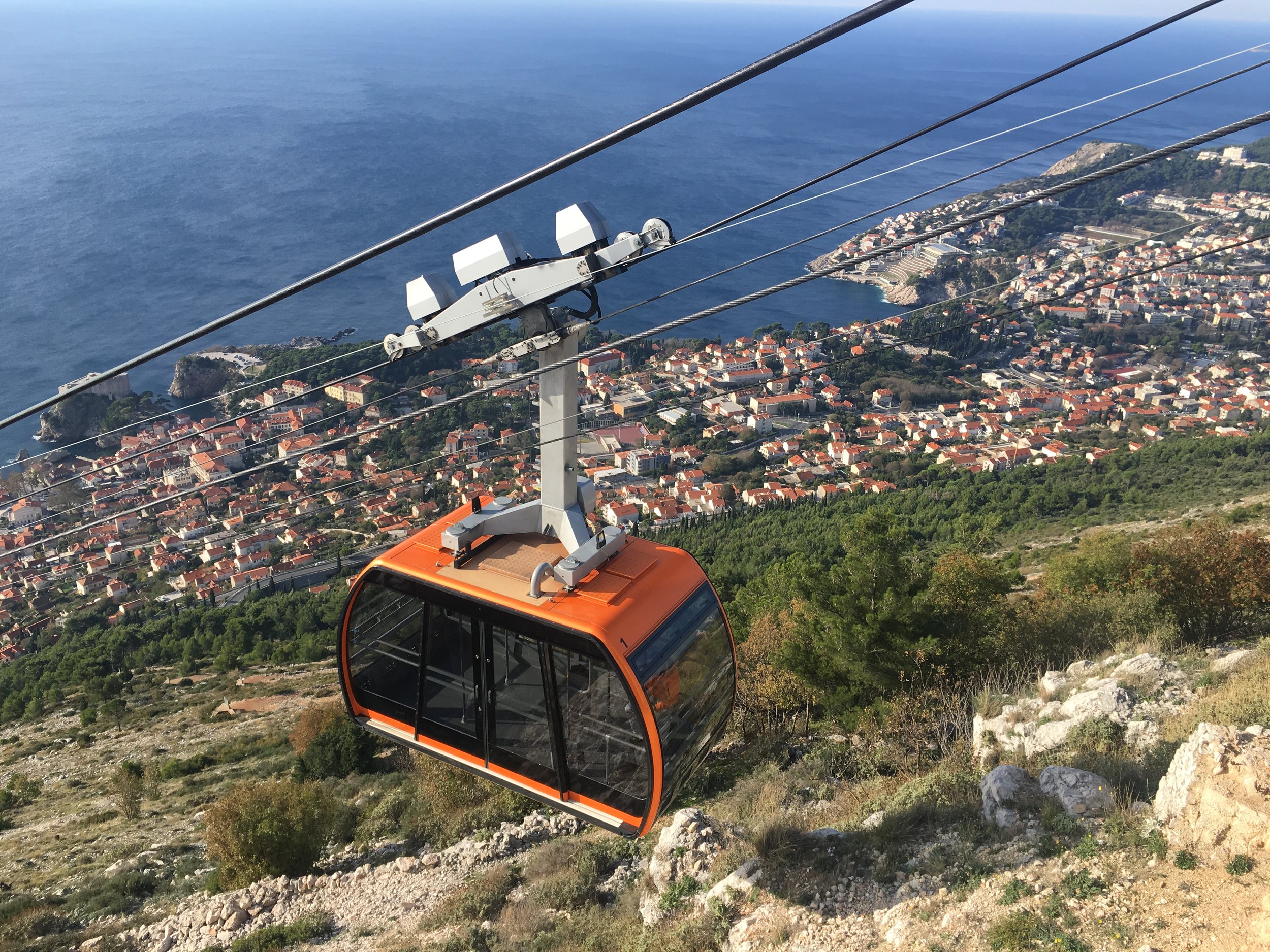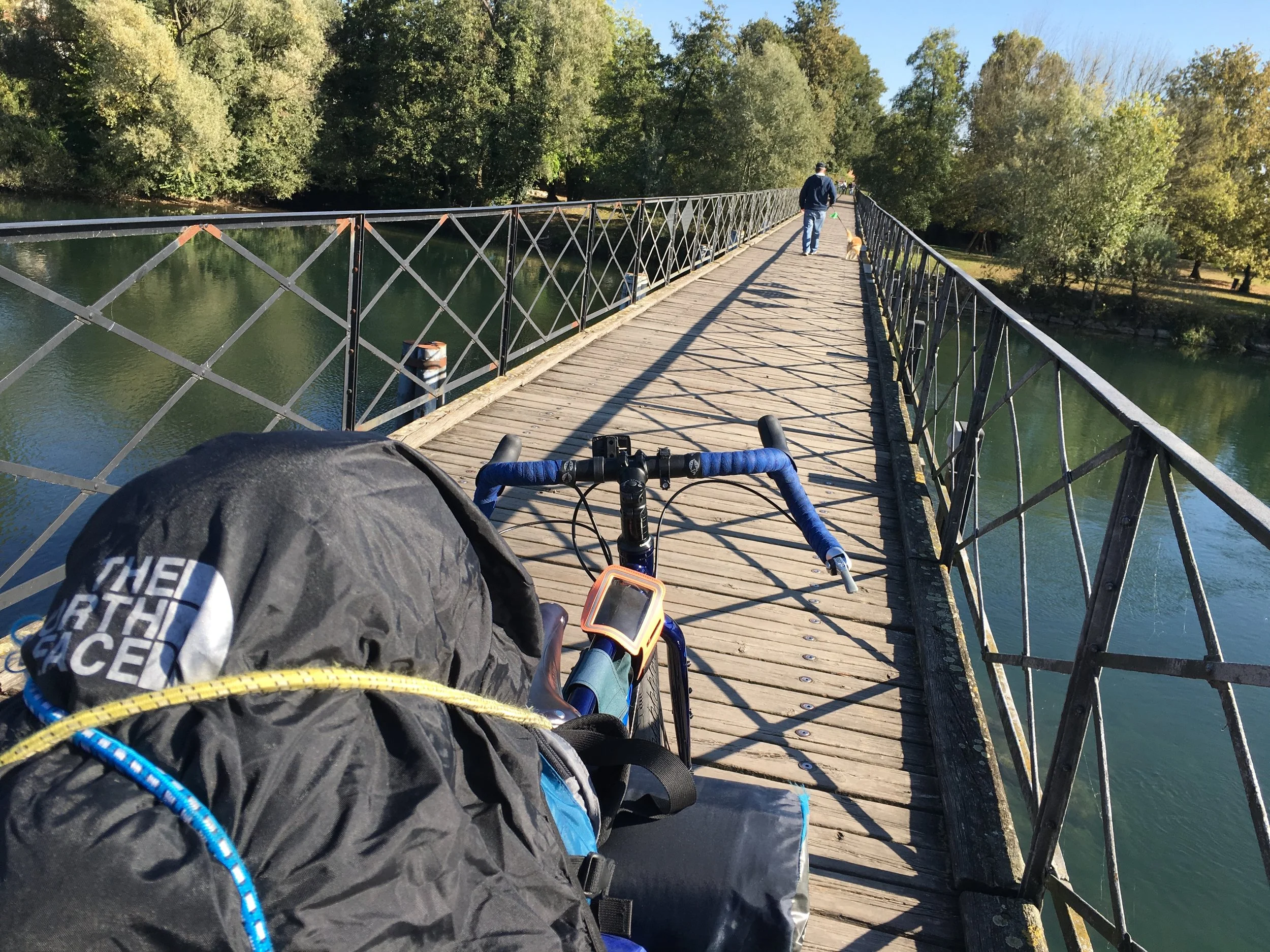Trogir, Croatia
I spent Oct. 20-Nov. 21, 2018 cycle touring unsupported from Milan, Italy to Split, Croatia this post recounts part of that journey.
Trogir is the Venice of Croatia. The historic city lies on an island between the mainland and the island of Čiovo. The UNESCO World Heritage Sites boasts Venetian architecture dating back to 12th century. The city has been inhabited since the 3rd Century BC. We watched the cruise ships come in from the Adriatic dropping off tourists for the day and drank a coffee outside on the wide sea-side walkway. The old city retains some of the original medieval wall and has 10 churches throughout it’s narrow, meandering streets.
Even in November, the Adriatic coast was warm enough to wear shorts and a tee shirt while drinking coffee outside at a coffee shop in Trogir.
Craig and I rode our bikes to the west side of the island and sat in the park near Tower Kamerlengo Fortress to eat lunch. Croatian bakers make delicious, fluffy round loaves of bread with crunchy crust called Peka that make excellent sandwiches when combined with sheep’s cheese and any type of cured meat.
I took my shoes off to air out my feet and wandered to the edge of the water. Sailboats were parked in a mooring to the south, but the water immediately in front of me was shallow and stone steps beckoned me in to dip my toes. The steps were slick and I gingerly stepped into the cool salty sea. Black sea urchins had made their home in the water, so I stayed in one place to avoid piercing my foot with their spines. I looked for crabs and sea stars and little fish. I collected some sand and shells for my grandmother. While she no longer travels herself, she collects sand from around the world. She has glass bottles in her guest bedroom carefully labeled with the names of towns and bodies of water her friends and family have brought back for her.
Craig stopped on the bridge back to the mainland to help a fellow cyclist with a flat.
I dried my feet and we packed up. Today was the day we would make it to Split, the final destination on our cycle journey. We biked across the island of Čiovo to a big white bridge with wide sidewalks to bike on. Craig stopped half way across the bridge to observe a man walking a mountain bike on the other side of the bridge. The man looked to be in rough shape and his bike had a rear flat. As a woman, I am often hesitant to stop and help strangers. Craig, being over 6 feet tall and a white man, doesn’t seem to be afraid of anyone and crossed the street to see if he could help.
The man spoke some English and said he had been a soldier in the war and that he lost many friends during the conflict. He appeared hard up, possibly homeless with drug or mental health problems. Craig tried to pump up the flat tire, but the stem was broken and it wouldn’t hold air. The mountain bike had different sized tubed than either of our bikes and Craig tried to explain all of this to the man who looked distraught. He didn’t know where to buy a tube. We suggested a market or bike shop. I found one on the map just a few kilometers away. I doubted the man had money to buy a new tube even if he made it to the shop. He walked away mumbling to himself leaving his heavy coat on the rail of the bridge.
Our bikes on the Čiovo bridge with the Split peninsula in the background.
Craig and I crossed back to our bikes and Craig packed up his tools. We commented on how incredibly rough it must be to experience war, to see people you know killed, and then to end up on the fringes of the society you risked your life to fight for. We finished crossing the bridge and turned right to continue on towards Split.







